16-bore shotguns under £10,000
Among the most underrated of guns, the 16-bore is considered to be the gun of choice for true sporting connoisseurs.
Win CENS ProFlex DX5 earplugs worth £1,149 – enter here
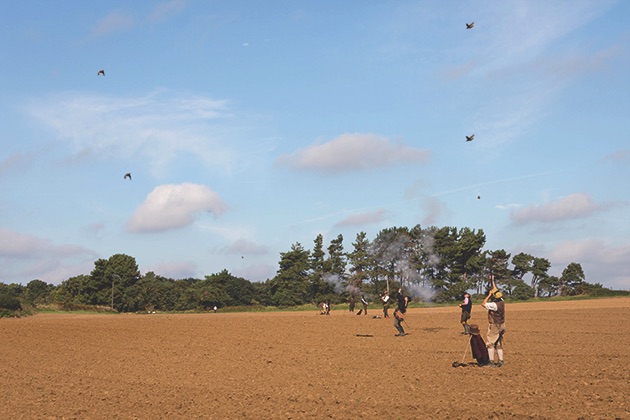
In any article about 16-bores, one should do one’s best to avoid the standard cliche of using ‘sweet’ and ‘16’ together. Most writers find it impossible.
Perhaps the best-known example was penned back in 1995 by American gun writer Michael McIntosh in his book Shotguns and Shooting. A chapter, called almost inevitably Who Killed Sweet Sixteen?, is a heartfelt lament for the demise in popularity of the gauge.
Despite its then unfashionable status, McIntosh asserted, quite correctly, that, “Ballistically, the 16 can do almost everything a 12 can do and it does everything better than a 20”. The 16-bore had been widespread in the US until the 1960s but then went into a steep decline.
A couple of years after this opinion was published, I remember turning up at my shoot with a newly purchased Holland & Holland 16-bore hammergun. As people had a look and passed comment (my hammerguns were always amusing to my fellow Guns who, to a man, shot foreign over-and-unders) the shoot captain said, “Shame it’s a 16, that kills the value, doesn’t it?” At the time he was right.
The 16-bore is one of relatively few gauges that made the transition from muzzle-loader to breech-loader and stayed the course. Muzzle-loaders could be made any size you wanted because you were custom-loading the charge in the barrel. When ammunition has to be bought from supplies made in a factory, a degree of standardisation is to be expected.
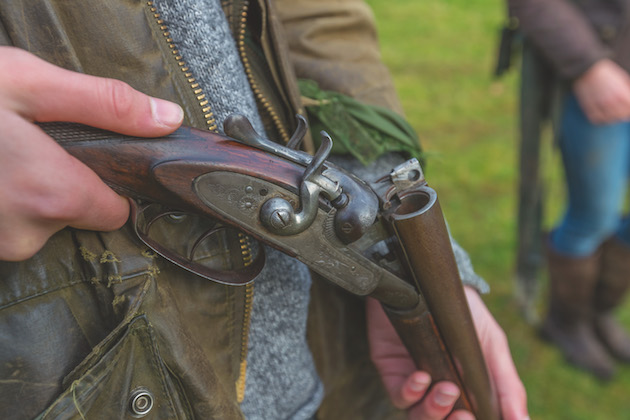
An antique E. Roberts side-by-side hammergun, one of many classic collectable 16-bores
In the early years, from the 1860s to the 1880s, a wide range of shotgun cartridges was available, including 36-bore, 34-bore, .360, 10-bore, 8-bore, 4-bore and even 14-bore. Gradually the less popular ones fell out of common usage and we were left with .410, 28-bore, 20-bore, 16-bore and 12-bore as commonly loaded options. Of these, 16-bore was always of minority appeal in Britain, though it was common in Europe, largely due to the old ban on military gauge civilian arms. Since military muskets were 12-bore, the sporting trade settled on 16-bore and the habit stuck.
Returning to McIntosh, he predicted, sadly, “die she will. Five or 10 years from now, you’ll be hard-pressed to find a new production 16-bore anywhere in the world.” Back then, the delivery system for the classic blue cartridge seemed doomed. In Britain, the decline had started much earlier. When Gough Thomas discussed the best choice of bore size for game shooting in Shooting Times in 1965, he asked: “12 or 20?” The 16-bore wasn’t even mentioned.
The drive for ever more firepower in the post-war era, which saw multi-shot 12-bore repeaters with long chambers firing magnum cartridges become popular, gave way to something of a backlash among sportsmen. The 20-bore became fashionable as a game gun in Britain and for upland hunting in the US, a trend that has continued to this day.
In the era of the Beretta Silver Pigeon acting as the Ford Escort of the shotgun market, ground once held by the Webley & Scott Model 700, we find the former in 20-bore guise weighs and handles much the same as the latter in 12-bore.
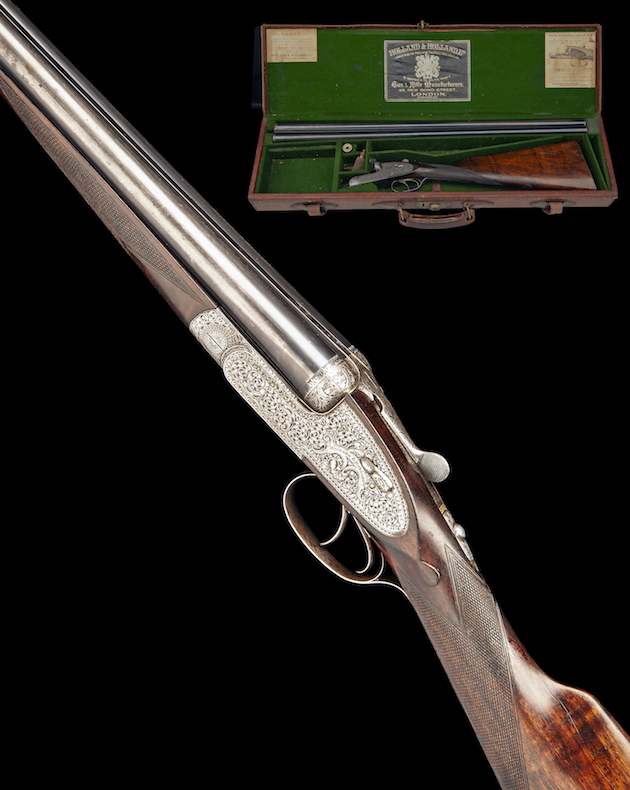
A Holland & Holland 16-bore ‘Royal’ from 1914
Stuck in the middle, the 16 somehow got lost. McIntosh estimated the value of a used 16-bore at around half that of a similar 20-bore in 1995. Some canny dealers, such as Cyril Adams, started chamber-sleeving 16-bores and selling them as 20-bores in the US.
The demise of many calibres and gauges has traditionally been linked to ammunition supplies diminishing as demand falls, creating a vicious circle — if they can’t buy a decent range of ammunition for it, most people are not going to buy the gun.
Markets, however, are strange and they do have a habit of reacting to value when it becomes too hard to ignore. Buyers looking at a £20,000 lightweight Purdey 12-bore began to take notice when the same gun in 16-bore could be had for £15,000 or less. The late 1990s and early 2000s was a time of demand for lightweight guns — 12-bores weighing as little as 6lb or so were in demand, while heavy gun sales were sluggish.
The 16-bore offered not only bargain prices but, to those paying attention, the same light weight and fast handling as a light 12. What’s more, it handled the same ideal game charge: one ounce of shot, which in a 16 is the ballistically ideal ‘square load’, being as high as it is wide.
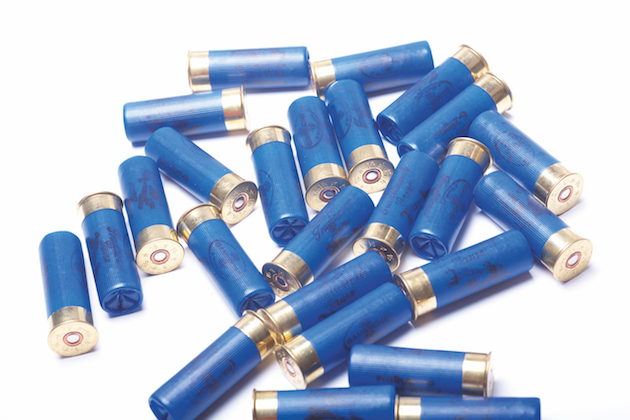
Blue is the conventional colour for 16-bore cartridges
Gradually, prices began to rise. The movement built momentum and soon 16-bores reached parity with 12s, then caught up with 20s. As the market in secondhand guns climbed, demand spilt over into new guns.
Italian makers noted the trend and began to respond, adding 16-bore models on properly-scaled actions to their ranges of over-and-under and side-by-side guns. Ammunition manufacturers also saw a developing market and began to offer a wider range of quality products.
Today, the choice of 16-bore guns and 16-bore ammunition is impressive — it offers a real choice between a light 12-bore and a heavy 20. A 16-bore is, pound for pound, stronger in frame and barrels than a 12-bore and produces shorter shot-strings and better patterns than a 20 with the same load. What’s not to like?
The merits of the 16-bore were not lost on old gunmakers. Dickson always considered the perfect ‘round action’ to be of 16-bore, with 29in barrels. Greener, in 1871, considered a 16-bore should have 30in barrels — partly because of the burn-time for black powder in small-bore barrels.
G.E. Lewis advertised ‘magnum small-bore’ guns in the 1920s and 1930s that were 16-bores intended to shoot 23⁄4in case cartridges loaded with 1 1⁄16oz, a common 12-bore load. He claimed they fired “the game charge of a 7lb 12-bore with equal pattern, velocity and penetration”, while weighing just 6lb 2oz.
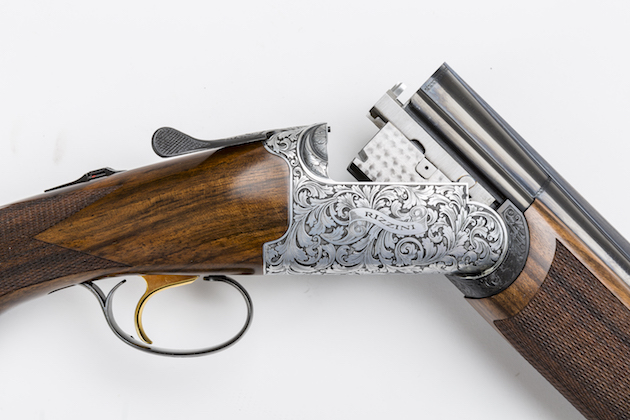
The Rizzini RB-EM round-action boxlock 16-bore
Far from falling out of production as McIntosh suggested, the 16-bore is now available from most mass-market manufacturers of shotguns. The choice includes the Rizzini RB EL at roughly £5,000, the Rizzini Artemis at £3,000 and the Guerini Maxum for £3,000. E.J. Churchill offers the 16-bore in its Regal side-by-side model. In the lower budget range, Lincoln offers the Jubilee Prestige in 16-bore.
Cartridge choice has widened, with Just Cartridges offering no fewer than 13 game cartridges in 16-bore, including bismuth for wildfowling. Prices for lead cartridges range from £299 per 1,000 for the excellent Gamebore
The 16-bore will probably remain a minority interest and is simply not on most people’s radar when it comes to buying a gun. I currently do my game shooting with an 1885 Stephen Grant side-lever hammer 16-bore, weighing 6lb 10oz. The proportions of the gun, its weight distribution, handling characteristics and shooting comfort suit me and the shooting I do.
I have never got on with Victorian English 20-bores. Most were made for women and children and I find them far too light and imprecise. The 16 is ideal in my view, having a sleeker profile than a 12, while handling the same one-ounce load beautifully.
Sixteen-bores were, historically, made in far smaller numbers than 12-bores so for buyers of older British guns, finding a good one is a challenge. Prices today are on a par with 12-bores, perhaps even stronger.
My advice would be to consider a 16-bore and try one if you can. It is, indeed, better than a 20-bore in every respect and in any guise it is more elegant than the equivalent 12-bore. For the driven shooter, a well-made 16 has the power to kill at range without feeling over-stuffed in the way a heavily loaded 20-bore can.
Let’s face it, most foreign 12-bore over-and-unders are overweight and a bit ‘clubby’. The 16 is a degree lighter and handier but still robust enough to handle proper game loads and 16-bore cartridges take up less space in your pockets than 12s.
Among the most underrated of guns, the 16-bore is considered to be the gun of choice for true sporting connoisseurs.
Which would be your choice in the 12-bore vs 16 bore conversation? Ask some people why they use a 16-bore…
A recent advertisement by ASI – the importer of AYA guns from Spain and, more recently, Rizzinis from Italy – bravely announced that “16 bore…
In the 1930s Cogswell & Harrison tried to convince the world the 143⁄4-bore was the ideal game gun. The world largely ignored that claim but I think the 16 may well represent that ideal, rather than the halfway house it has been dismissed as for so long, overlooked by many shooters. I think they have been missing a trick.
Get the latest news delivered direct to your door
Discover the ultimate companion for field sports enthusiasts with Shooting Times & Country Magazine, the UK’s leading weekly publication that has been at the forefront of shooting culture since 1882. Subscribers gain access to expert tips, comprehensive gear reviews, seasonal advice and a vibrant community of like-minded shooters.
Save on shop price when you subscribe with weekly issues featuring in-depth articles on gundog training, exclusive member offers and access to the digital back issue library. A Shooting Times & Country subscription is more than a magazine, don’t just read about the countryside; immerse yourself in its most authoritative and engaging publication.

